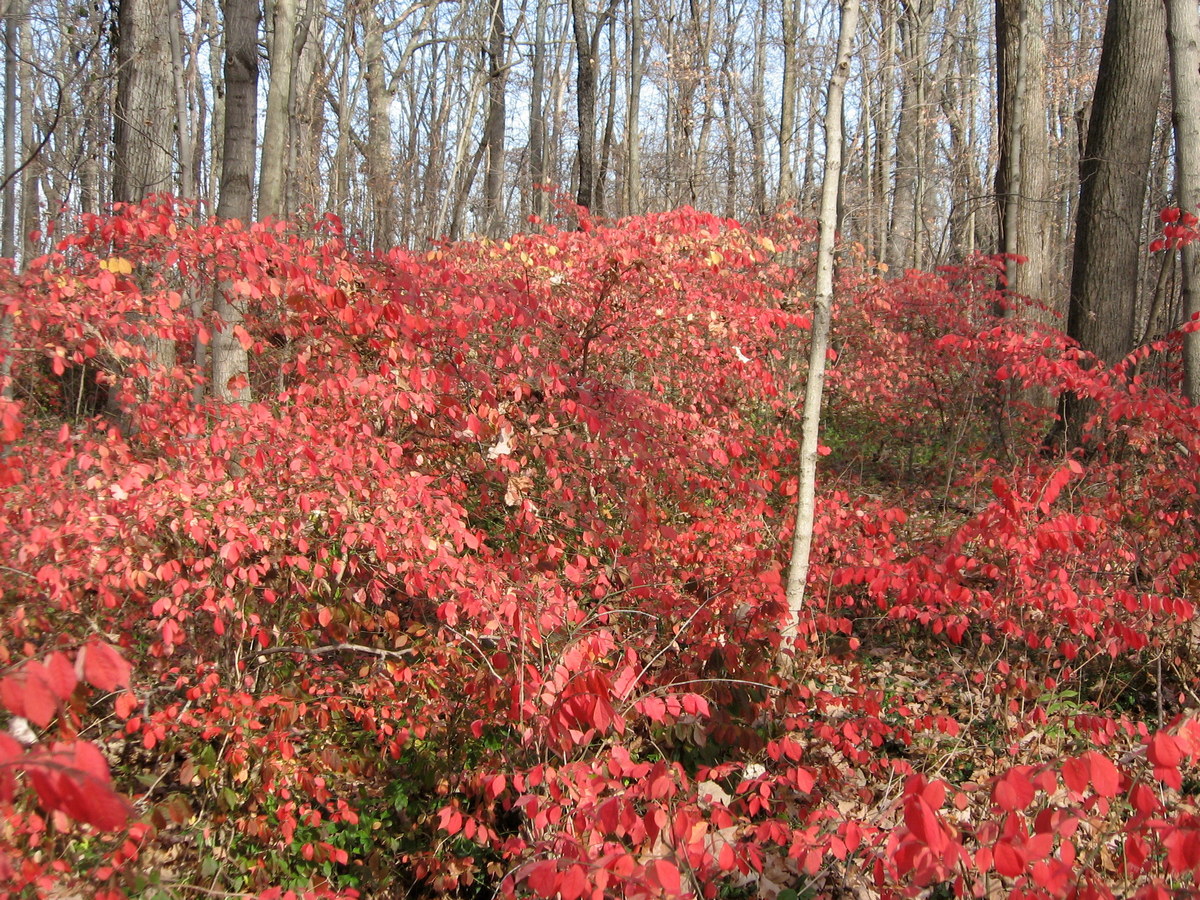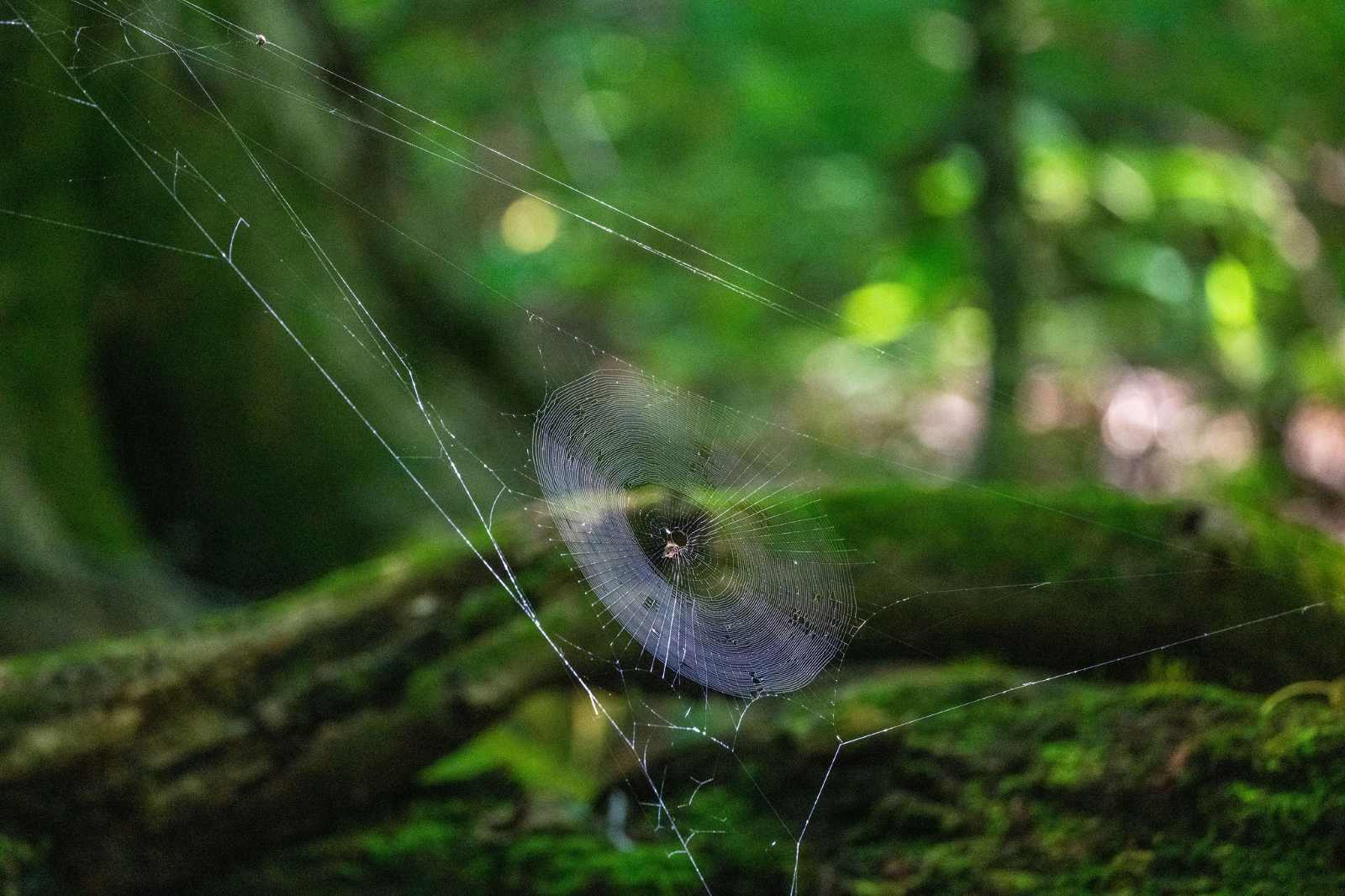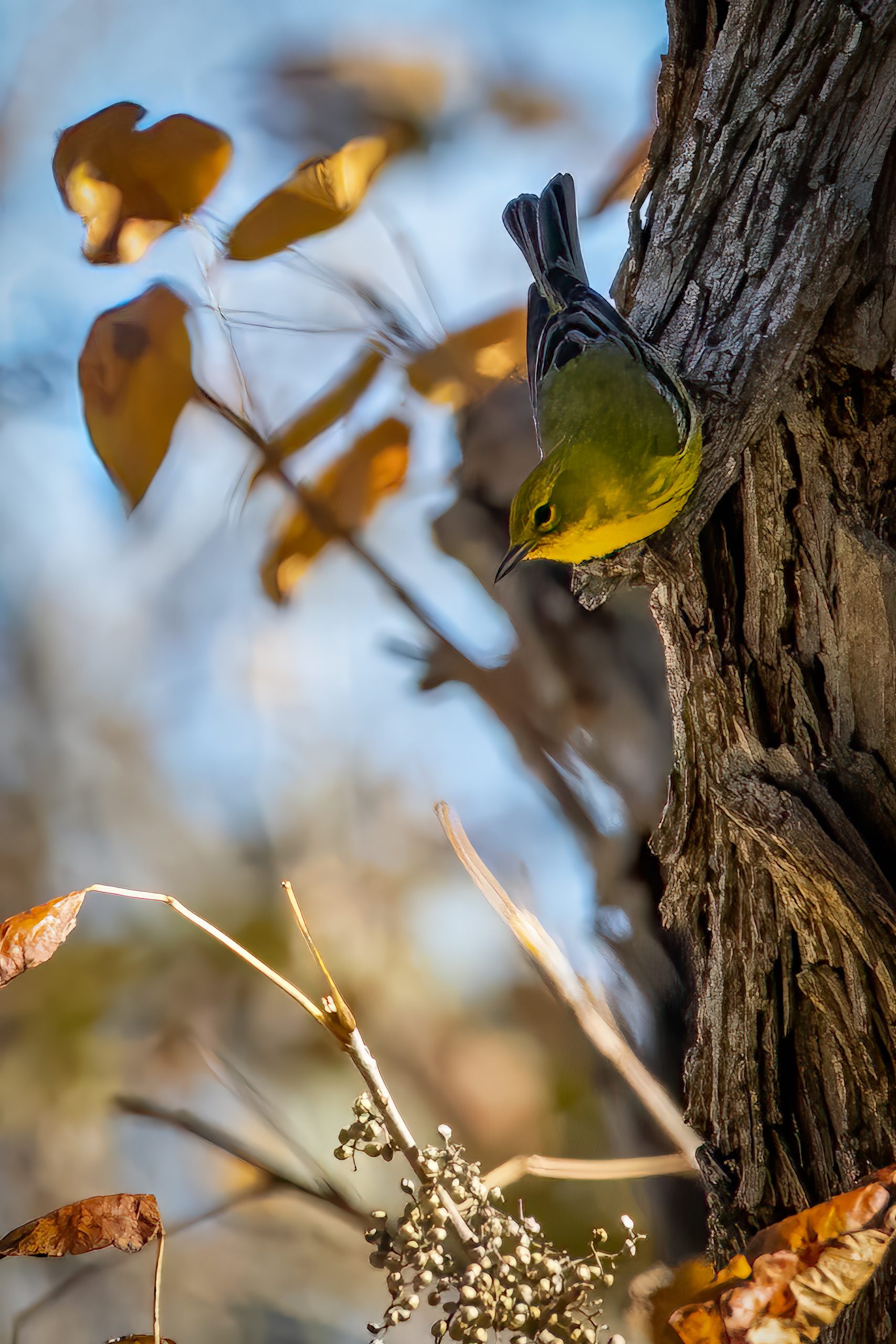
Burning bush
Burning bush in a natural area
Burning Bush: A Hardwood Forest’s Enemy
Written By: Ed Pope
Date Published: March 3, 2021
Ed Pope
Part of a series on invasive species by guest blogger Ed Pope
Burning bush, also known as winged burning bush, is native to eastern Asia. It was imported into New England in 1860 and became a popular landscaping shrub for a couple of reasons. It is very easy to grow, and it grows slowly, so it doesn’t have to be trimmed often.
Burning bush is frequently used in hedges, often found in commercial areas or foundations around private homes. Its name comes from the brilliant red color of its leaves in the fall. Unfortunately, it has become a problem in the eastern United States and is considered an invasive in over twenty states. It has been banned in New Hampshire, Maine and Massachusetts.
Although burning bushes grow slowly, they can eventually reach heights of 25 feet. They flower in spring to early summer. Their small red fruits appear in September or October. Some seeds drop to the ground and germinate, producing small shrubs underneath the parent. Others are eaten by birds and those seeds are dispersed widely. Burning bush has become a problem in and around wooded areas, especially hardwood forests, where they outcompete and displace native species. These infestations usually start from nearby ornamental plantings.
Three native Indiana plants (non-invasive) are closely related to burning bush:
- Eastern burning bush (also known as wahoo) has longer leaves that each fall turn a brownish orange, instead of red.
- Running strawberry bush is more of a ground cover, and never gets more than a few feet in height.
- Strawberry bush is a small shrub that only occurs in southwestern Indiana, usually in moist woodland soil.
Removing a burning bush infestation is typically a multi-year effort. Fortunately, the seeds can no longer germinate after one or two years, much less than garlic mustard, which can lay dormant five years. The best way to remove burning bushes is often a mix of cutting and spraying. Start by cutting all trees more than chest high. The cut surface of the stump should immediately be treated with herbicide to keep it from resprouting. The cut trees need to be removed to get them out of the way. The remaining (smaller) burning bushes should be sprayed.
Here is a Purdue University video about removing burning bush:
Native alternatives to burning bush include: wahoo or eastern burning bush, highbush cranberry, chokeberry, leatherwood and spicebush.
Burning bush is an invasive that can be found on most CILTI properties, however there are few infestations that are extreme. Meltzer Woods had a pretty serious population, but it has been knocked back from years of treatment. Because it is spread by birds and it has been used so heavily in residential plantings, there is some almost everywhere. Luckily, it is quite easy to identify in the forest and really becomes obvious in the fall when it turns bright red and everything else in the understory is losing leaves. The stewardship team tackles if by cutting/treating, spraying and even pulling young plants.
Want to help CILTI restore natural areas? Check out volunteer opportunities here. You can help us improve the health of forests and other natural habitats.

Ben Valentine
Guest Blogger
Ben Valentine is a founding member of the Friends of Marott Woods Nature Preserve and is active in several other conservation organizations. He leads a series of NUVO interviews with Indiana's environmental leaders, and he cherishes showing his son all the wonders of nature he grew up loving.

DJ Connors
Guest Blogger
DJ Connors, a Central Indiana native and late-to-life hunter, combines a lifelong appreciation for wildlife and the outdoors with a deep passion for exploring the natural beauty of the area he has called home for most of his life. As a husband and father of three, he is committed to ensuring his children have the same opportunities to connect with nature and appreciate the outdoors in their community. DJ’s unique journey into hunting emphasizes sustainability, responsible stewardship, and the importance of preserving these experiences for future generations.

Bridget Walls
Guest Blogger
Bridget is our first ever Communications and Outreach Intern. She is a graduate of Marian University, where she combined English, studio art, and environmental sciences in her degree studies. As treasurer for Just Earth, the university's environmental club, she helped plan events encouraging a responsible relationship between people, nature, and animals.

Jordan England
Guest Blogger
Jordan England is a lifelong Shelby County resident who graduated from Waldron Jr. Sr. High School (just a few miles from Meltzer Woods!). After earning her B.S. degree in Retail Management from Purdue University, she returned to Waldron to start a family with her husband, Brian. Together they have 3 young children and enjoy sharing with them their love of the community. Jordan is the Grants and Nonprofit Relations Director at Blue River Community Foundation, managing BRCF’s grant program, providing support to local nonprofits, and promoting catalytic philanthropy in Shelby County.

Cliff Chapman
President and CEO
As CILTI’s President and CEO, Cliff keeps CILTI’s focus on good science and stewardship. He’s mindful that the natural places you love took thousands of years to evolve and could be destroyed in a single day, and that knowledge drives his dedication to their protection.

Stacy Cachules
Chief Operating Officer
Among her many key duties as Assistant Director, Stacy has the critical task of tracking our budget, making sure we channel donations for maximum efficiency. When her workday’s done, Stacy loves to spend time with her two young boys—and when not traveling, she’s likely planning the next travel adventure.

Ryan Fuhrmann
Vice Chair
Ryan C. Fuhrmann, CFA, is President and founder of Fuhrmann Capital LLC, an Indiana-based investment management firm focused on portfolio management. Ryan’s interest in land conservation centers around a desire to help preserve natural habitats for wildlife and the subsequent benefits it brings to people and the environment.

Joanna Nixon
Board Member
Joanna Nixon is the owner of Nixon Consulting, an Indianapolis-based strategy and project management firm focused on the nonprofit sector. She currently serves as the Philanthropic Advisor for the Efroymson Family Fund. Prior to opening her consulting practice in 2000, Joanna was vice-president for grantmaking at Central Indiana Community Foundation (CICF). Joanna has more than 25 years of experience in the nonprofit and arts and culture sector. She is passionate about the environment and loves bringing big ideas to life and creating high-quality arts and culture programs and experiences. Joanna enjoys outdoor adventures, including competing in fitness obstacle course races and hiking with her high energy Australian Cattle Dog, Jackson.

Karen Wade
Board Member
Before retiring, CILTI board member Karen Wade worked for Eli Lilly & Co. In retirement she volunteers for a number of organizations, including the Indiana Master Naturalist program, Johnson County Native Plant Partnership CISMA, Meadowstone Therapeutic Riding Center, and Leadership Johnson County.

David Barickman
Development Systems Manager
Born and raised in Central Illinois, David spent many days as a child wandering around the river, forest and lakes there. He works behind the scenes as a key member of our fundraising team. When not working, David loves to be outdoors hiking, fly fishing, kayaking or woodworking.

Jamison Hutchins
Stewardship Director
Jamison leads our stewardship team in caring for the land that is so important to you. He comes to our team after eight years as Bicycle and Pedestrian Coordinator for the city of Indianapolis, where his work had a positive impact from both health and environmental perspectives.

Jen Schmits Thomas
Media Relations
An award-winning communicator and recognized leader in Central Indiana’s public relations community, Jen helps us tell our story in the media. She is the founder of JTPR, which she and her husband John Thomas own together. She is accredited in public relations (APR) from the Public Relations Society of America, and loves to camp and hike in perfect weather conditions.

Shawndra Miller
Communications Director
Shawndra’s earliest writing projects centered around the natural world, starting when a bird inspired her to write her first “book” in elementary school. Now she is in charge of sharing our story and connecting you to our work. Through our print and online materials, she hopes to inspire your participation in protecting special places for future generations.

Phillip Weldy
Stewardship Specialist
Phillip enjoys nature’s wonders from an up-close-and-personal perspective as he works to restore the natural places you love. As an AmeriCorps member in Asheville, NC, he had his first full immersion in relatively undisturbed land while reconstructing wilderness trails in National Parks and National Forests.


December 2, 2025
Our board member, John Bacone, reflects on conserving key natural areas. He led the Department of Natural Resources Division of Nature Preserves for over four decades. Years ago, when I was working in the Indiana DNR Division of Nature Preserves (DNP), I asked Bob Waltz, the State Entomologist, how [...]
Betley Woods,Blossom Hollow,Homepage,Meltzer Woods,Newsroom,Properties,Stewardship


September 26, 2025
Want to see more nature protected in 2025 and beyond? Now is your chance to make twice the difference for Indiana’s lands, waters, and wildlife.
Fred & Dorothy Meyer Nature Preserve,Newsroom,Properties,Stewardship


June 26, 2025
FOR IMMEDIATE RELEASE Acquisition adds to property set aside for wildlife habitat and shielded from development The Central Indiana Land Trust, Inc. (CILTI) has closed on the purchase of an 80-acre forested parcel in Brown County, adding to a cluster of protected properties and ensuring habitats endure for several [...]
Newsroom,Press Releases,Properties




























